We’re just about a month away from the opening of free agency.
We’ll soon examine external options that might fill the Maple Leafs‘ needs in the UFA market, but we first have to consider the decisions to be made regarding the expiring contracts currently on their NHL roster, which includes nine UFAs (excluding Matt Murray) and four RFAs.
In Part 2, we’ll take a look at the defense. Today, we’ll start with the forwards and goaltenders in need of new contracts.
Tyler Bertuzzi
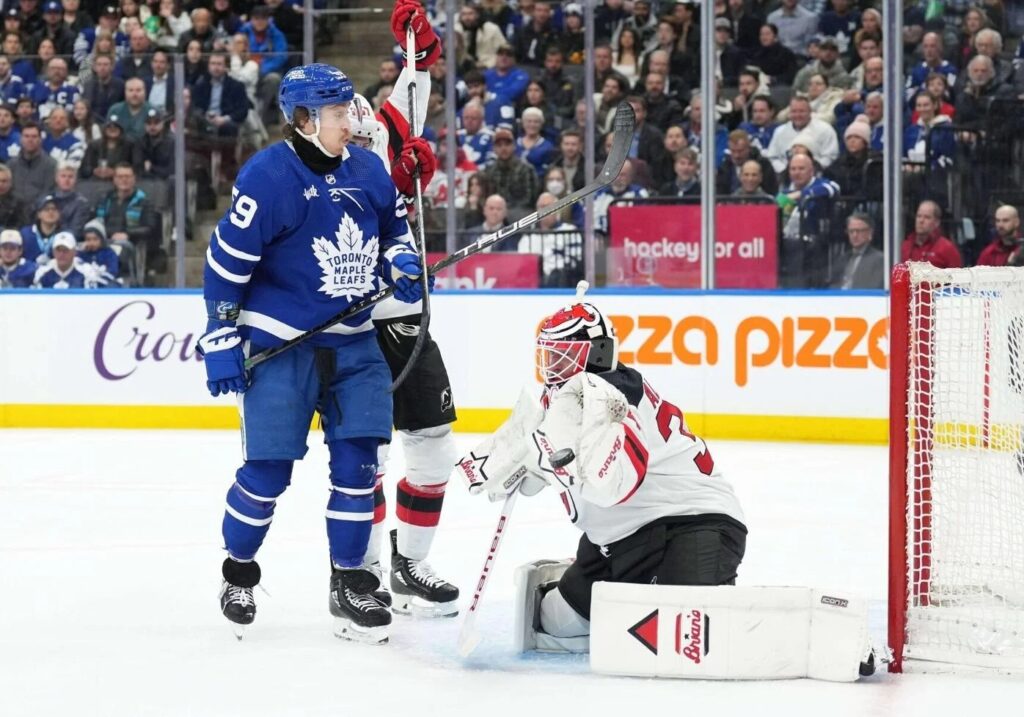
Bertuzzi’s one-year trial in Toronto has ended, and after failing to secure the longer-term contract he wanted last summer, we have to think his agent will be adamant about receiving it this time.
Bertuzzi is an interesting UFA for the Maple Leafs to consider because while he is certainly a good hockey player, the topsy-turvy nature of his fit in Toronto this past season and the likely contract demands make it a bit harder to decide. At face value, Bertuzzi is the sort of player you’d like to keep around on this Leafs roster — a solid top-six forward who makes the team harder to play against and has scored 20+ goals four times in the NHL.
But there are some question marks. It took Bertuzzi a long time to click in Toronto. Through his first 51 games, he scored just six goals and 21 points, far below the expected production. Much to the surprise of some analysts, Bertuzzi didn’t seem to fit as the winger alongside Auston Matthews and Mitch Marner — he was moved next to John Tavares and William Nylander — and there was also the strange incident where Bertuzzi was seen smiling and laughing on the bench after his former teammate, Brad Marchand, injured Timothy Liljegren in a game in Boston back in November. Multiple times in the first half of the season, Sheldon Keefe was seen confronting Bertuzzi on the bench, and Keefe was also candid in the media about Bertuzzi’s need to improve his game.
However, the former Leafs head coach was also adamant that Bertuzzi’s game would ramp up once the games tightened up and playoff hockey neared. Indeed, it eventually began to click for Bertuzzi as the snakebitten forward saw the puck go in the net around the time of Toronto’s February winning streak. He finished the season with 15 goals in his final 29 games, scoring 22 points in that span. The Leafs found a better solution for Bertuzzi after the injury to Mitch Marner, playing him with Max Domi and Matthews on a line with a lot of juice and chemistry, contributing to Bertuzzi’s hot close to the season.
Bertuzzi was brought in to deliver in the playoffs, as he had for the Bruins the year before, but his performance in the first-round defeat was more “solid” than majorly impactful. He added one goal, coming in the Game 3 defeat when Morgan Rielly inadvertently fired a shot off Bertuzzi’s skate and in the net, but Bertuzzi did not intentionally put any pucks past Jeremy Swayman. Bertuzzi picked up three other assists in the series, including on the lone Game 7 goal, but it was a far cry from the five goals and 10 points he tallied in a seven-game series the spring before.
Overall, we’re left with a forward who scored 21 goals and 43 points, producing good underlying metrics in the process. The Leafs regularly won Bertuzzi’s minutes no matter who he was playing with, which was often offered up as a defense of the forward during his first-half shooting slump. There’s nothing wrong with how Bertuzzi played this season necessarily, but it was hard not to feel like some meat was left on the bone. Bertuzzi was expected to push for a career-high in goals — 30, scored in 68 games back in 2021-22 — given that he was going to be playing with vastly more talented offensive players than he played with in Detroit. He was also expected to be a major impact piece in the postseason. Neither happened. He was fine or good. Not great.
This makes the decision this summer tricky. The Maple Leafs are a better team with Tyler Bertuzzi on it, and he appears to suit new head coach Craig Berube’s style of play. But can they justify the cost given his good-not-great season and the contract demands?
AFPAnalytics projects Bertuzzi to receive a deal worth $5.3 million per season over four years this summer, and it wouldn’t be shocking if he receives a fifth year or a higher cap number. He’s one of the better forwards on the market, and with the cap rising, many teams have increased cap space to play around with. The Leafs have a chunk of space themselves, but they are tasked with fixing the defense and perhaps finding a more stable solution to share the net with the oft-injured Joe Woll. Is it worth spending a quarter of the team’s available cap space on a 29-year-old forward who didn’t really hit a home run during his trial in Toronto?
The other obvious question to consider is what happens with Mitch Marner. Should Marner (or somehow, Tavares) be traded, there is the possibility that the Leafs will have a lot more money to play around with and a much bigger need up front. In that world, perhaps it makes more sense to bring Bertuzzi back. If there is no change among the core four forwards, it may not be a terribly wise allocation of resources (unless they find extremely cost-effective solutions to G/D) to hand Bertuzzi a substantial extension, especially at his current age.
Max Domi
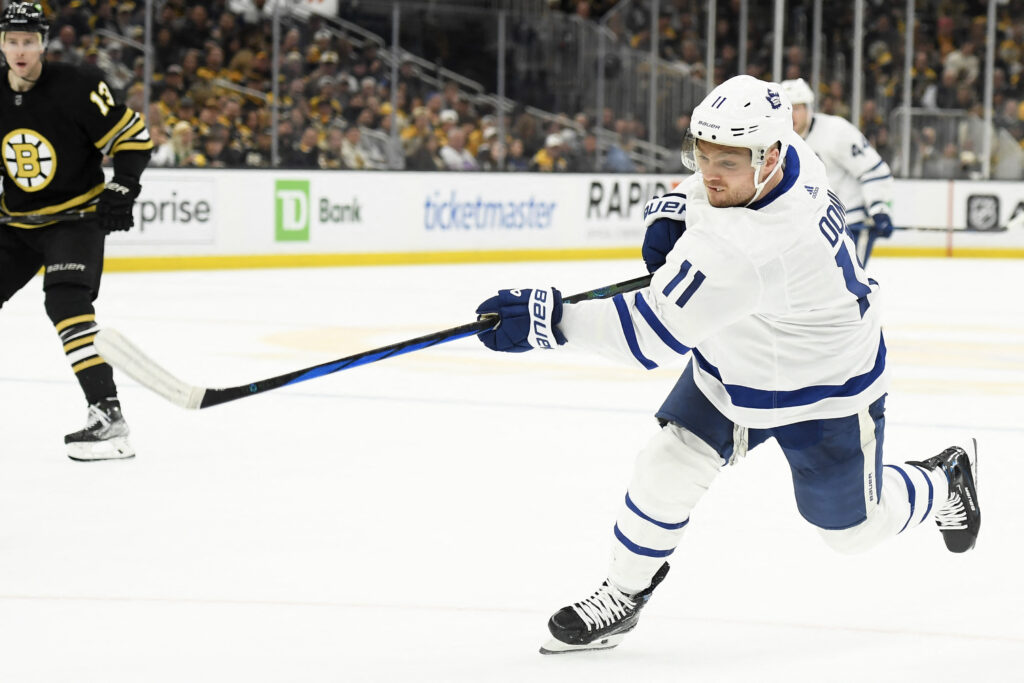
Speaking of someone whose future may hinge on the status of Mitch Marner, enter Max Domi. The other scoring forward who took a one-year prove-it deal to come to Toronto last summer, Domi is a fan favourite in Toronto. He’s the Leaf who seems to have the greatest understanding (except maybe Morgan Rielly) of what it means to wear the blue & white and don the Maple Leaf crest on the front — unsurprising given his lineage, and it matters to the organization and the fans.
Domi seems to enjoy life as a Maple Leaf, and thus, it seems possible to work a deal out, but the devil, as always, is in the details. A recent Pierre LeBrun article at The Athletic detailed (frankly) outrageous contract terms as what would “get it done,” writing five or six years at between $5-$6 million per season. That is completely nonsensical, to put it plainly.
Domi has struggled to stay in one place over the course of his career, so it makes sense that he’d be seeking term (other sources have corroborated that), but five or six million is excessive for a 29-year-old who has only been a 40-50 point scorer the last two seasons. Moreover, Domi has only once signed a contract with an AAV of over $3.2 million (2x$5.3 in Columbus in 2020), and that deal was followed by consecutive one-year, $3 million contracts. There is no precedent for Domi to be signing a $25-30 million deal this summer. While he had a nice season in Toronto, he did nothing to distinguish himself from the past Domi, who was never worth that amount.
The models agree, with the AFPAnalytics projection pegging Domi’s deal at 2x$3.6 million. That feels much more reasonable, and it is possible that if the Domi camp is looking for term, the number could go down further. If Domi wants four years, a slightly reduced cap hit of $3-$3.2 million would be very palatable to the Leafs. Anything below $4 million feels doable for a solid middle-six winger with some ability to play center, one who showed significant chemistry with the franchise’s centerpiece.
Domi isn’t a great player, but he has some real skills. Yes, he will always be deficient in the defensive component of the game. Yes, he’s not much of a goalscorer. But Domi is a tremendous passer who does most of his damage at five-on-five and does it in pretty limited ice time. Domi was fifth in five-on-five assists in the regular season this year, and the other five players in the top six besides him were superstars McDavid, Kucherov, MacKinnon, Draisaitl, and Crosby.
Domi is more of a gadget player than a core piece, which is why his contract terms will need to reflect that limited usage (he played only 13:47 per night this season), but it never hurts to have an exceptional passer with desirable intangibles and established chemistry with the best goalscorer in the league. That’s especially true if Mitch Marner is moved; Domi would instantly become the team’s best pure passing forward if he were extended.
There’s a deal to negotiate here as long as Domi’s camp is reasonable. If the LeBrun article was merely bluster or clickbait farming and the projected contract was more accurate, it could get done, and it would be in the interest of both sides to get it done. But if Domi’s camp actually thinks they deserve $5-6 million per season, the Leafs need to stay as far away from it as possible because Domi’s ice time and usage is too limited to be allotted such a cap hit.
Connor Dewar and Noah Gregor
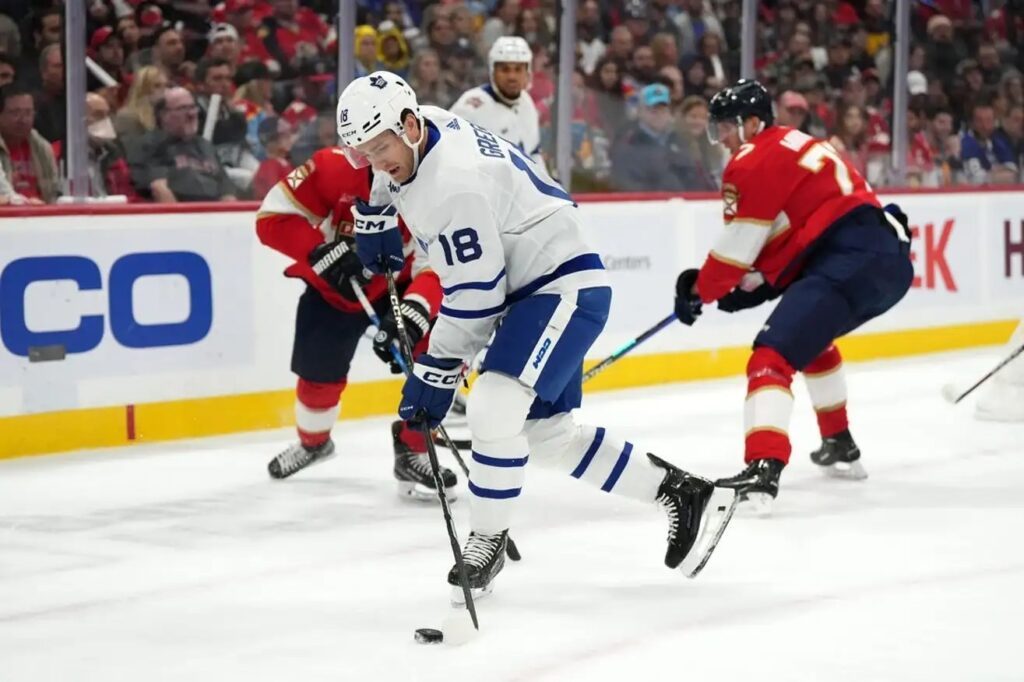
Dewar and Gregor are pending RFAs, but it is never a sure thing that non-prospect RFAs will return, so we’ll include them here.
Gregor was a flier that the Leafs took last offseason, hoping that he could add team speed to the lineup and effective PK ability for a team that was looking to reload in that capacity after losing such players as Sam Lafferty and Alex Kerfoot. Gregor started out okay; his line with Ryan Reaves and David Kämpf was crushed in the territorial battle, but the winger was at least putting the puck in the net at a reasonable clip. He scored five goals in the first 28 games of the season while shooting 9.6%. It wasn’t obviously fluky, and if the Leafs could receive 10-15 goals from a 10 or 11 minutes per night fourth liner, that’s not a bad return.
Unfortunately, Gregor’s effectiveness declined significantly as the season went along. He scored just one goal in the final 35 games of the year, and his shooting percentage ultimately finished at 5.5%. He wasn’t terribly impactful defensively—either at 5v5 or the PK—and his limited offensive game caught up to him.
Gregor is indeed very fast, but he has few other tools on that end of the ice, seldom passing and often settling for low-percentage shots. Once the Leafs acquired Connor Dewar at the deadline, the very line that was dreadful early in the year with Gregor on it suddenly became effective as Dewar-Kämpf-Reaves gave the Leafs good shifts down the stretch.
That seemed to be the greatest indictment of Gregor, who truthfully looks more like an AHLer than an NHLer. It doesn’t make sense to bring Gregor back as a member of the NHL roster, but it may be acceptable if he wanted to return on a two-way deal that would start him with the Marlies but place him 14th or 15th on the organization’s forward depth chart.
On the other hand, Dewar is a player the Leafs should bring back. A cut above Gregor, Dewar looks like a real NHLer. He scored 11 goals between Minnesota and Toronto, and the penalty kill looked its best when Dewar received a larger role on it during Mitch Marner’s injury. As mentioned in the preceding paragraph, the line of Dewar with Kämpf and Reaves was quietly effective for the Leafs, which continued in the playoffs. Dewar made a great pass to create a goal in Game 1 of the series and was quietly effective in his six games against Boston in the first round.
Dewar is only turning 25 this summer and could be a useful piece for the Leafs for several seasons, grading out as elite defensively (5v5 and PK) in the underlying numbers. On a team that will be looking to rebuild its horrendous kill, it wouldn’t make much sense to non-tender Dewar. He also has the ability to play wing or center and is projected for a deal of two years at just a $1.2 million cap hit. It’s a no-brainer for the Leafs and saves them from additional bottom-six forward shopping in what could be a lively UFA market.
Ilya Samsonov
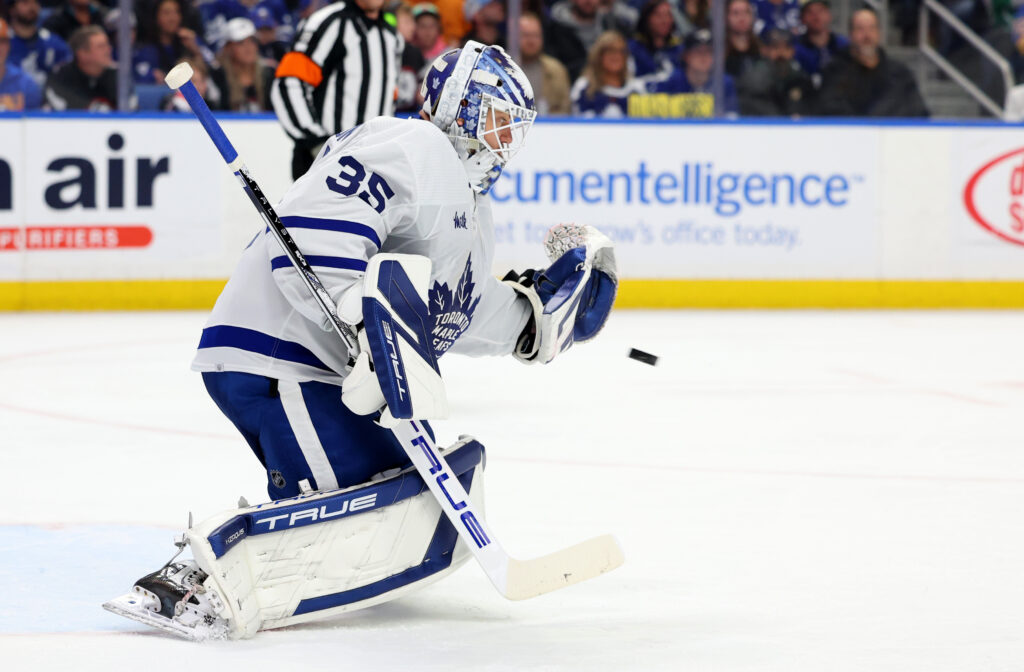
Before we get into whether the Leafs should want Samsonov back, we should acknowledge the reality: The Leafs do not appear to be overly interested in bringing Samsonov back. The end-of-season comments from Brad Treliving seemed to indicate that the team will be going in a different direction in the net. Moreover, the team’s clear desire to have Joseph Woll win the goaltending job after he returned from injury in early March (giving him both Boston starts right after he was activated from LTIR) made it pretty clear what they thought of Samsonov. The Russian’s erratic play and noisy movements in the crease seem to have run their course in Toronto, so you can probably bid Samsonov adieu.
But is it the right call? Samsonov is a talented goalie, no question. His 2022-23 season was very good, and his goaltending effort against the Lightning in the first round was excellent. The Leafs would’ve been dead in the water if they had Jack Campbell or Frederik Andersen in the net against the Bolts instead of Samsonov. We can never take that away from him, but we also can’t deny that the performance rollercoaster was real. Even in the 2023 playoffs, Samsonov was liable to give up terrible goals. A weak wrist shot he allowed in Game 2 against Florida flipped the momentum of that game, and he did the same thing against Trent Frederic in the crucial Game 3 against Boston in 2024.
Of course, there was also the prolonged meltdown in the fall of 2023 that led the Leafs to waive Samsonov outright and send him to the Marlies to reset his game. At that point, it wasn’t clear if Samsonov would ever play for the Leafs again, but a credit to him, he worked his way back. He gave the Leafs important starts late in the year, and he was good in Game 2 against the Bs. He also produced a largely admirable effort in Game 7 after Woll’s injury, even if both goals had some questions about them. Despite all of that, Samsonov’s unpredictable level of performance means it’s probably a good idea for the Leafs to move on from him, knowing they need a more stable option to pair with Woll.
The disastrous goalie market is the only reason why there is any discussion of whether Samsonov should return. Only two UFA goalies have recently been true starters for their teams, and Samsonov is one of them. The aging Cam Talbot is the other one. Not great! The other names are a mix of unsatisfactory and untested backups: Alex Nedeljkovic, Kaapo Kähkönen, Scott Wedgewood, Casey DeSmith, Anthony Stolarz, and James Reimer.
If the Leafs want to find a steady starter to pair with Woll, they will probably have to go the trade route, which could mean surrendering their limited assets. Through that lens, one could argue it may be smarter to bring Samsonov back on a one-year deal and hope for a bounce back to 2022-23 form, but it doesn’t seem like that’s the route the Leafs will take. Treliving will have to be creative to solve the situation in the net for this upcoming season.
Martin Jones
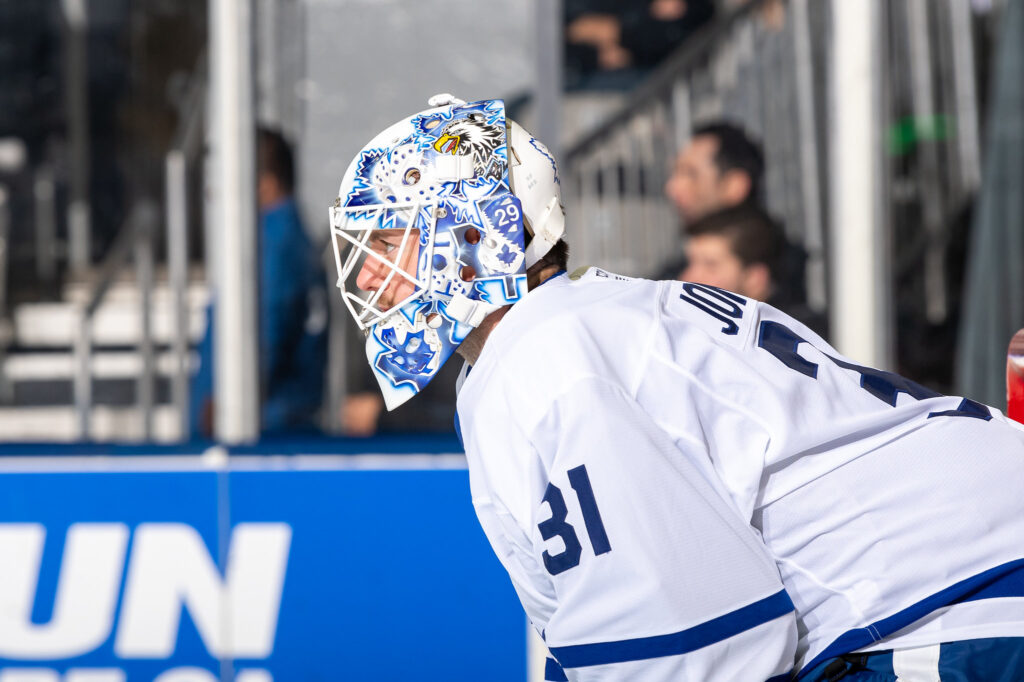
The Leafs’ veteran third goalie is headed to unrestricted free agency, and while there isn’t much to say about Jones, it would be a good idea to bring him back in a similar capacity. A pretty non-descript signing at the time, Jones played a quietly big role for Toronto, appearing in 22 games and shouldering a significant load during Samsonov’s exile in the AHL and Woll’s injury.
Jones went on a bit of a hot streak in that time and delivered the Leafs some key wins to keep their season afloat. Eventually, he returned to earth — Jones is no longer a good NHL goaltender — but he was a much-needed insurance policy as a viable #3 the club could ferry back and forth between the AHL.
Given Joseph Woll’s struggles with injury, keeping a solid #3 who can fill that role next season would be a good idea. It’s very possible that the Leafs will deal with injuries in the crease again next season and will need a third goalie to play games. Jones did it well enough, and he’s a proven professional who knows the league.
Maybe the Leafs opt for an Eric Comrie or a Magnus Hellberg type instead, but there isn’t a particular need to change it up when Jones did his job and worked fine in this role. Any third goalie will be making roughly the same amount, so there are no cap machinations at play here. If the veteran wants to come back and split time between the Marlies and the Maple Leafs again, I don’t see a big reason why they shouldn’t bring him back unless there’s a major fear of age-related decline. The question mark is whether or not the team will be in a cap/roster position to carry three goalies, and if not, whether Jones would clear waivers as he did last fall.





















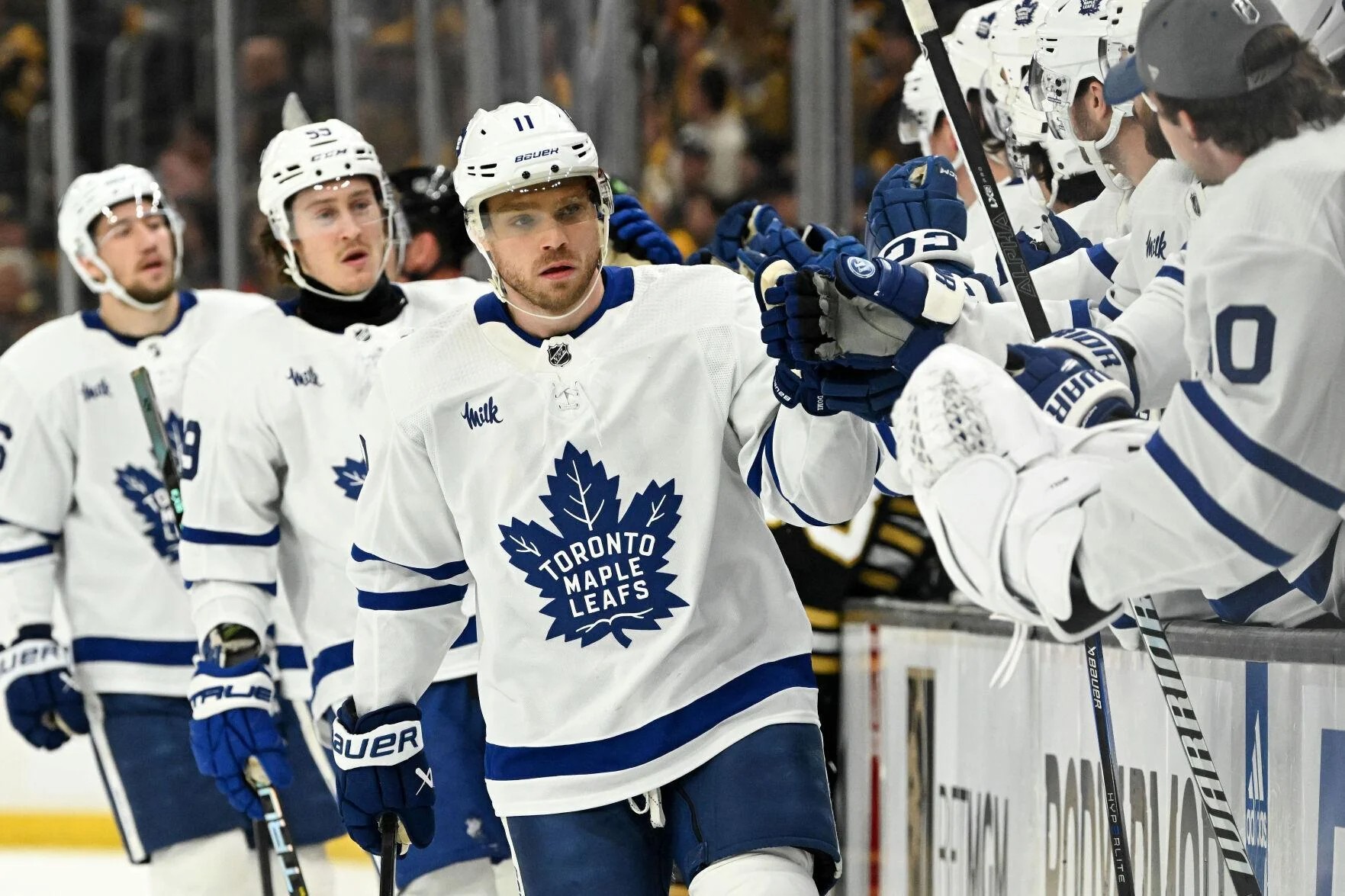








![New Leaf Anthony Stolarz on the opportunity in Toronto: “In Florida, I knew my role as a backup… Now, [Joseph Woll] and I are competing for starts… As a goalie, that’s all you can ask for” Anthony Stolarz, Stanley Cup win, now Maple Leaf](https://mapleleafshotstove.com/wp-content/uploads/2024/07/anthony-stolarz-sc-100x70.jpg)
